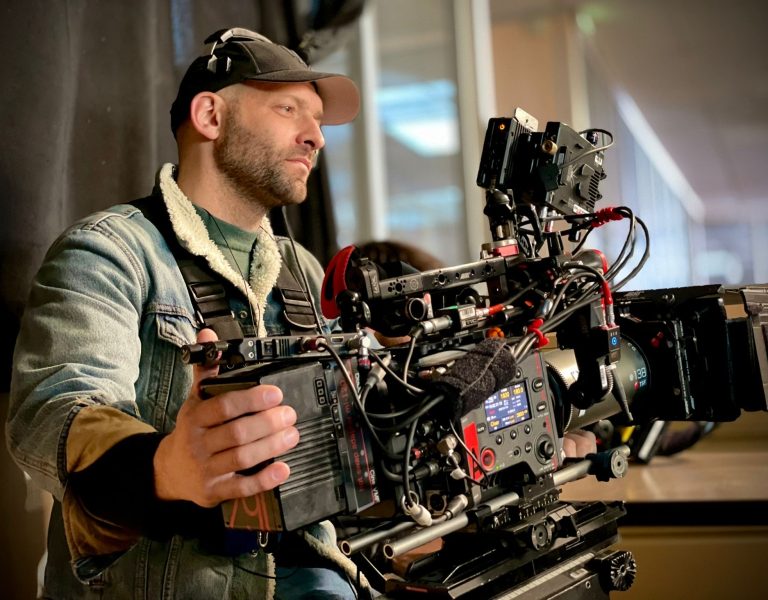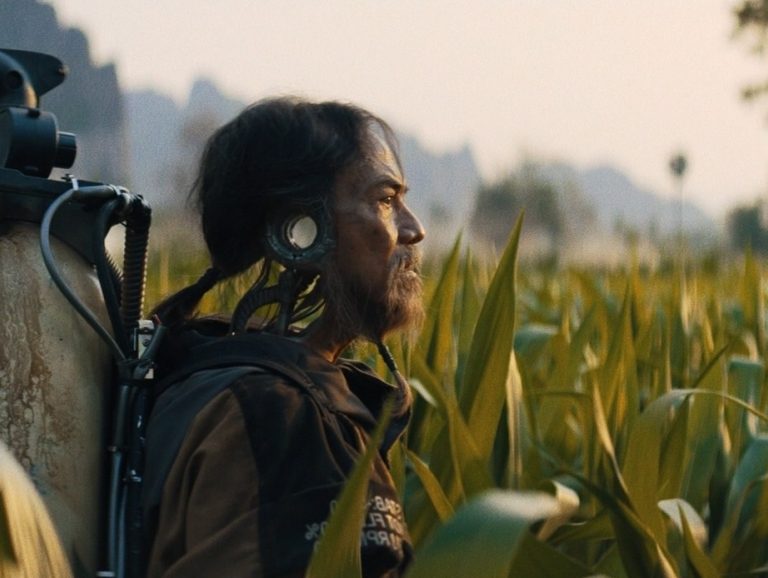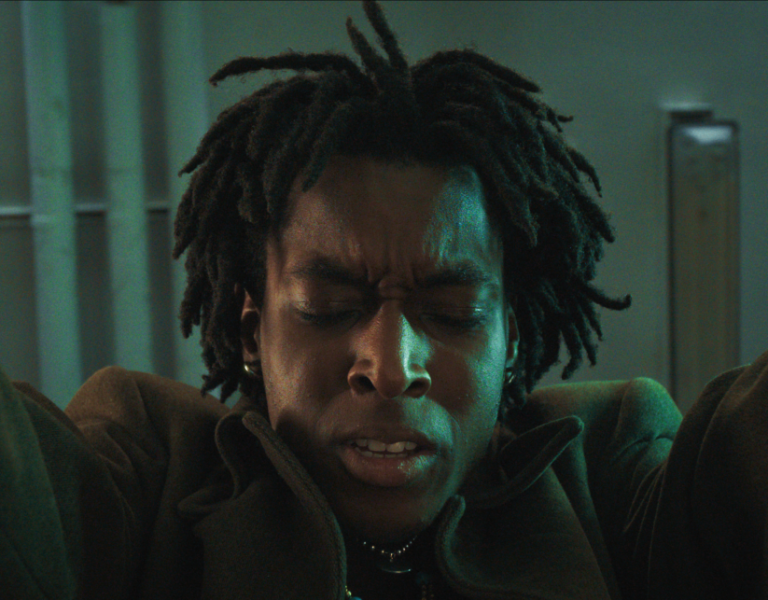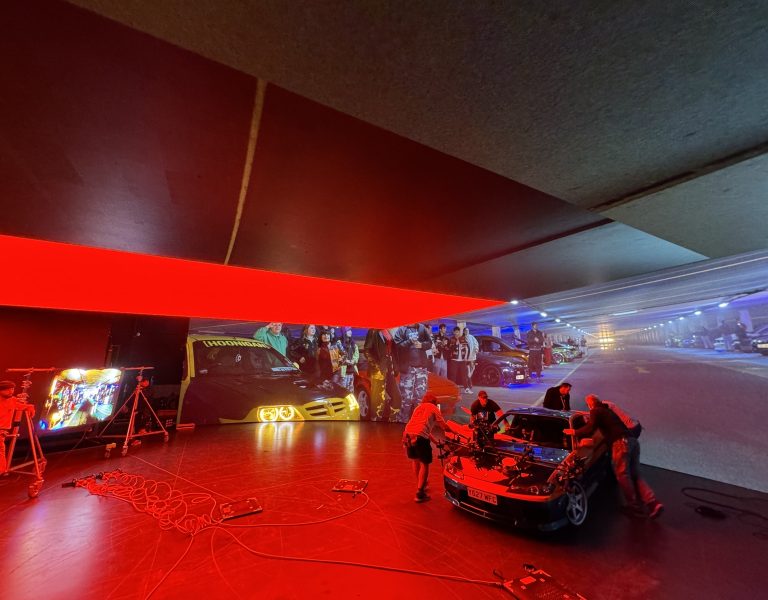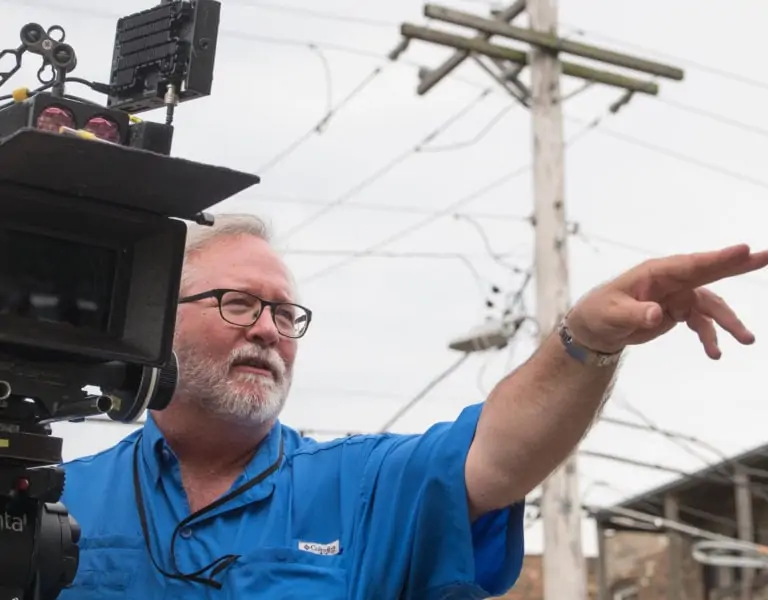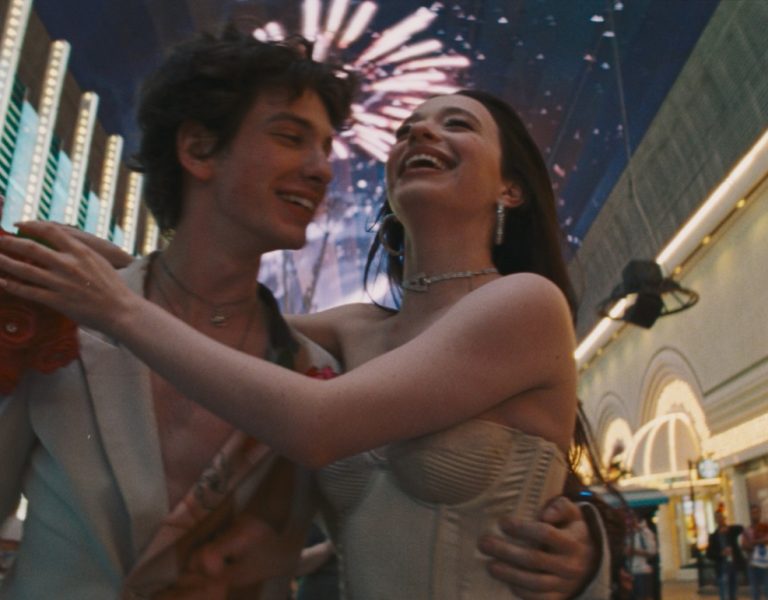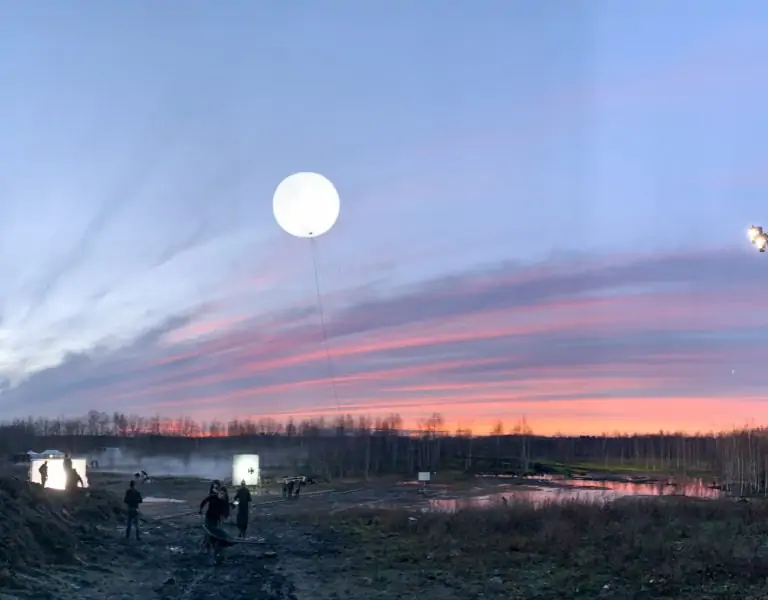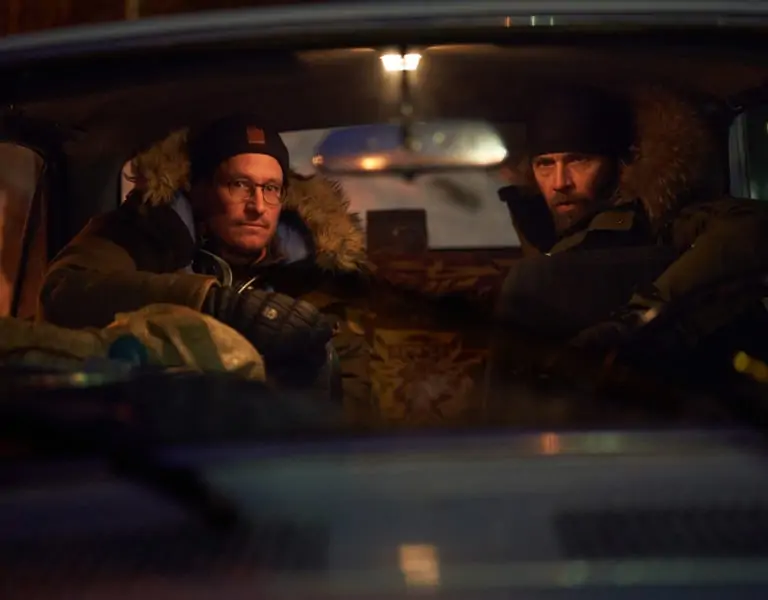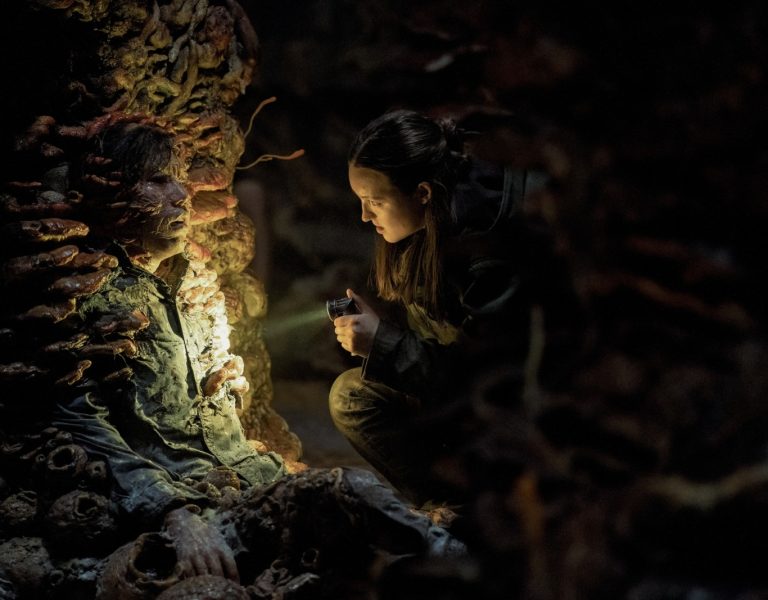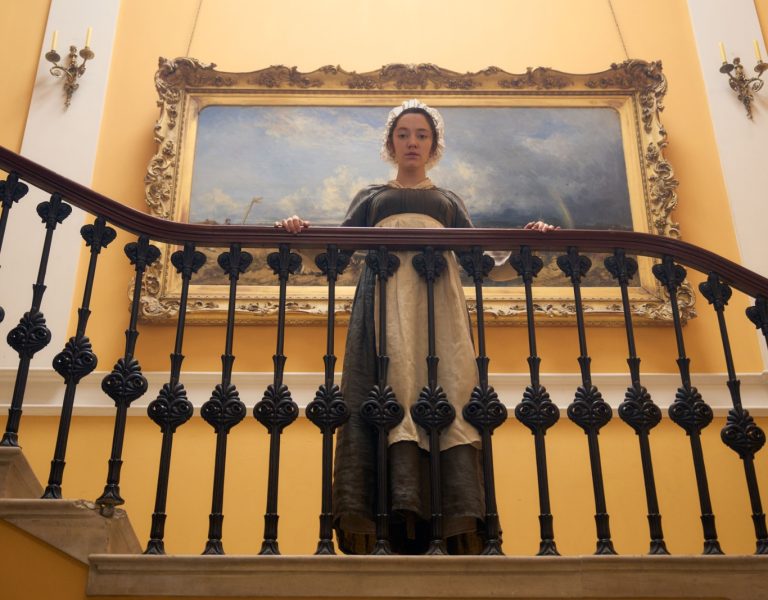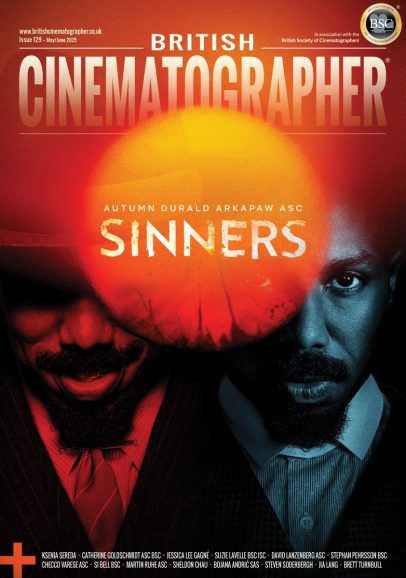Home » Features » The Bigger Picture »
FILMMAKING’S FUTURE: AI’S CERTAIN UNCERTAINTY
The debate around AI is no longer about where it can be used—but how far it can go.
Many reading this are sick of hearing about AI in filmmaking for the same old reasons. Some fear automation will replace human creativity. Others are exhausted by endless speculation and uncertainty over its impact.
That said, whether a breakthrough or a threat, AI isn’t a distant possibility—it’s already reshaping the industry in unprecedented ways.
In Here, a $50 million adaptation of the 2014 graphic novel, Tom Hanks and Robin Wright undergo real-time AI de-aging across 60 years. Instead of traditional CGI, director Robert Zemeckis used Metaphysic’s technology to modify their faces live on set, a major shift from Indiana Jones and the Dial of Destiny, where Harrison Ford was de-aged in postproduction. As Hollywood embraces AI, unions push back with restrictions, but Furiosa and Alien: Romulus have already adopted similar tools, proving the industry’s commitment to digital evolution.
Wait, there’s more. The Brutalist, one of the most talked-about films of the moment, earned 10 Oscar nominations, including Best Picture—but its use of AI sparked controversy.
Editor Dávid Jancsó revealed AI voice technology refined Adrien Brody and Felicity Jones’s Hungarian dialogue, raising ethical concerns. Director Brady Corbet insists it was only for minor phonetic tweaks, yet the debate underscores Hollywood’s growing unease with AI in filmmaking as awards season is in full swing.
Joe Lewis, head of audio at The Voiceover Gallery, believes that “the use of AI for the voices of the actor when speaking Hungarian is the perfect example” of where AI is used to enhance a human performance. “Hungarian is a notoriously difficult, unique language and its native speakers are extremely proud,” he says. “Although I understand the actors had language training, I suspect the accents still fell short. Adrien Brody is both an excellent and idiosyncratic actor whose decades of knowledge and experience cannot currently be comprehensively mimicked or originated by AI in a timely and cost-effective manner. In this instance, I really feel this is a brilliant use of AI technology to both improve productivity and quality which, in my opinion, is one of the most ethical and pragmatic ways of using AI.”
What’s more, As AI reshapes production, investors are taking note. Recently, AI solutions provider Largo.ai secured $7.5 million in Series A funding, co-led by TI Capital and QBIT Capital, with backing from Sylvester Stallone, Thomas Tippl, and DAA Capital.
IN THE MAINSTREAM
So, if AI is – rightly or wrongly – for want of a better expression, “good enough” for Hollywood’s elite, how long until it reaches other areas of videography? It already has. Filmmaker PJ Accetturo, co-founder of Jupiter—an organisation that describes itself as “a company redesigning the future of entertainment with ethical AI”—creates ads for major brands and has three AI-generated TV shows in development.
“I’ve spoken with many cinematographers working on commercial projects and they’re now using MidJourney for their treatments and mood boards,” he explains. “Instead of traditional boards, they present MidJourney-generated images to clients and then aim to match those visuals as closely as possible during production. The irony, of course, is that they’re still shooting traditionally—whereas the direction we’re heading, and what we’re already seeing with our clients, suggests that production itself may become obsolete.”
Fellow filmmaker Simon Ball says he “first got wind” of text to image generators around three-years-ago when he was “messing about” with Google Colab the cloud-based platform that enables AI development by providing resources for coding, training machine learning models, and running AI experiments efficiently.
“I was getting these very strange, loopy computational outputs, which was very exciting,” he says. “Nothing really happened for a year or so, then suddenly I came across MidJourney and Stable Diffusion and I started watching YouTube videos about the subject.”
His first collaboration with a production called Original Short Film, which played at Oscar qualifying festivals last year, notably beating Lucasfilm and the BFI at Cinequest to win Best Narrative Short Film in the sci-fi/horror/thriller space. More recently his movie The Future Can Be Yours, starring Sam Crane (Grand Theft Hamlet), shot by Alex Grigoras about a man who falls through a hole in his carpet into a strange, hallucinatory world.
“Our film demonstrates how AI can fit in with the traditional filmmaking method, opening new doors/possibilities for production as well as creating new jobs (rather than replacing anything),” Ball continues. “In the film we shot in reality, then I broke the image down using AI to transform it. For instance, there is a scene where the character falls through a hole in his carpet and ends up in a strange Piranesi inspired landscape. This was actually Westminster Underground station, as the game became how could we find locations that have the architectural wireframe for characters to walk about in and then transform them accordingly.”
However, as the discussion around AI in film evolves, not all uses of the technology are equally groundbreaking—its true potential lies in how it is applied, rather than in simply generating content for the sake of novelty,” according to Ball.
“If you’re just using a software package, generating outputs, and calling it ‘revolutionary,’ then you’re barking up the wrong tree,” he says. “It’s just not that impressive—it’s simply using an app, with no real creative skill involved. Marketing teams will hype it up with flashy videos that excite people on LinkedIn. But when it comes to real-world production, it often falls short and ends up being rubbish. AI has its limitations, but if you’re aware of them and integrate AI thoughtfully into your filmmaking process, it can unlock interesting creative possibilities. Ethically, I don’t have a problem with it, as long as it’s used in a truly creative way.”
CTRL+ALT+REPLACE?
Accetturo says the rise of AI raises a crucial question: how will production as a whole evolve?
“We’re already seeing a transition where cinematographers are shifting into roles we call digital DPs—essentially prompt engineers for AI-assisted or hybrid productions,” he explains. “In this workflow, AI plays a major role in pre-production and post-production, while live-action remains part of the process, but in a much more limited way. The idea that AI is only useful for pre-production and previsualisation is short-lived. Full-scale production is already being displaced for many types of content. We’re working with some of the biggest brands in the world and they’re rapidly shifting towards AI-driven solutions.
The industry is shifting fast and many filmmakers are scrambling to keep up. For a long time, discussions about this technology were kept under wraps, but now, more people are open to talking about it. The more we share, the better creatives can navigate these changes.”
Then, of course, there’s the on-screen talent. Actors aren’t just worried about AI taking over effects work—they fear being replaced altogether. The 2024 video game voice actor strike, led by SAG-AFTRA, highlights growing concerns over AI-generated performances. Voice actors and motion capture artists are fighting for protections against AI replication, worried that companies could use their likenesses or voices without consent or fair compensation. After all, Peter Cushing’s Grand Moff Tarkin and Carrie Fisher’s Princess Leia were digitally resurrected – or ‘deepfaked’ – for Star Wars. If technology can convincingly recreate actors from the past, how long before studios sideline human performers altogether?
Cinematographer Ravi Varman ASC ISC did it when he shot Indian 2, but it was out of necessity. “Some actors became unavailable during COVID,” he says. “We cast lookalikes and used AI to replace their faces. ”The move also “greatly reduced” the VFX costs involved.
“I don’t replace anyone on my productions, but AI is just practical,” says Ball. “I need to illustrate a particular type of world and AI allows me to transform my images in a way that plays to its strengths—things like its weird, hallucinatory qualities. That gives me an opportunity to tell a story I wouldn’t have been able to otherwise. If AI is just being used to recreate something that already exists, I don’t see the point. Making a generic 3D sci-fi film isn’t interesting. That already exists. At that point, AI is just a cheap way to do special effects instead of developing something genuinely unique.”
Lewis adds “it’s almost impossible for us to ascertain” what unique combination of traits makes a successful actor. “To this end, I don’t think we will be fully replacing actors anytime soon,” he argues. “Nonetheless, I believe that there are some interesting cases where the use of hyper-realistic cloned voices could save money in production. For example, limited implementation of cloned voices in ADR sessions to avoid having to bring the actor in during post-production or, more relevantly, filmmakers could save money on employing people to teach A-list actors how to speak foreign languages.”
MOVIE MAGIC
What’s more, Ball adds that the AI-enhanced versions of classic films risk stripping away what makes them special. “The imperfections and quirks are part of the magic of cinema,” he continues. “It’s like in Star Wars when the stormtrooper bumps his head—those little accidents make films feel alive. If people start using AI to smooth over every flaw, it sucks the joy out of filmmaking. The chaos of production—the high stakes, the ridiculous problems you have to solve with barely any money—is part of what makes it fun. If AI is just a way to ‘fix’ things, it turns filmmaking into content creation for streaming platforms rather than an art form.”
Varman draws parallels to past technological shifts in filmmaking. He believes fear of change is nothing new but that new tools ultimately expand creative possibilities rather than diminish them.
“Earlier, when cameras came into existence, portrait photographers vanished,” he continues. “Many even committed suicide due to the loss of jobs. But I don’t think we can relate this to that. When stage plays emerged, people feared books would become irrelevant. Later, when cinema arrived, there were concerns about the end of stage plays. Then, with digital filmmaking, some predicted the decline of film. But none of these disappeared—they simply evolved into different forms of expression. I see the advent of AI in a similar light. It’s not about replacing creativity but offering a new medium and tools to explore and tell stories in fresh ways.”
PICTURE THIS
Filippo Rizzante, chief technology officer at global consultancy Reply, which has its own AI film festival, says, “Perhaps AI represents the intersection” where human creativity and technological advancements exist together.
“History tells us that technological advancements have propelled the evolution of cinema,” he explains. “From the invention of motion pictures to the celebration of colour, 3D technologies and interactive narratives, filmmakers have continually embraced new tools to craft more immersive and visually stunning narratives. Technology and film have always been collaborators in the ongoing evolution of storytelling and human expression.”
Ryan Avery, vice president, Tokina Cinema, concurs and adds that AI “will undoubtedly affect how films are shot and edited, but it will also influence how camera lenses are developed and marketed,” he explains. “Powerful optical design tools already exist so the innovations will come in analysing images created by cinematographers in near real time to discover trends. It is all about connecting data points. AI gives us tools to analyse this data faster and adapt. Just as filmmakers are using AI to enhance creativity, lens manufacturers could use it to refine their products and meet market needs more efficiently.”
GOING OFF-SCRIPT
Ball says “what fascinates” him about AI image generation is when it goes off-script. “If you try to force it into photorealism, it never quite works—it’s always a little off, because it’s not real,” he adds. “So instead of fighting that, I wanted to embrace it. The idea was to take something mundane and make it feel surreal. We filmed the actor walking up an escalator, then I took that footage and transformed the architecture into something inspired by Piranesi’s imaginary prisons. It fit within the script’s framework and created a world that felt unique.”
Varman says he is also putting the tool to good use in prep. “I see AI as the greatest library in the world,” he explains. “My best use case is to visualise the lighting. AI helps in generating visual references. But I believe we humans are far more superior and capable. So we improvise on them and create much better visuals.”
In contrast, DP Diana Olifirova (Bridgerton) has had limited experience with AI so far. “I have only used ChatGPT to help me rephrase my ideas in a more elegant way,” she says. “I imagine many reference search processes are now enhanced by AI without us even noticing, helping to speed up how we visualise and communicate our ideas.”
Furthermore, she sees potential for AI in streamlining workflow, adding, “I think it could simplify prep and possibly help with colour matching to speed up post-production. That said, I would always want to collaborate with the colourist to refine the look and be specific about each shot. I truly believe every shot should be treated like a painting, with meaning and meticulous attention to detail from the director, DP and colourist.”
The general consensus is that AI is here to stay, but in just what capacity is anyone’s guess.
“I know this is controversial, but we’re witnessing a growing divide: on one side, ultra-high-end productions will continue and on the other, everything else will likely be AI-generated,” says Accetturo. “Obviously, Christopher Nolan isn’t going to create an AI film, and Hollywood is currently positioning AI as just a tool for VFX and minor enhancements. But in reality, we’re already producing AI-driven TV shows for under a couple of hundred thousand dollars per episode.”
For Varman, AI will continue to play a growing role in filmmaking, helping dedicated artists streamline their work rather than replace them.
“Whoever is passionate and dedicated to their craft will see AI as another tool to make their life easier and embrace what it has to offer,” he concludes. “AI has enabled a single person to create a film which should have taken 100 people to make in the past. A lot of people have already embraced the technology, and I’m sure many will follow.”
Rizzante says that with the evolution of AI, “the ways we tell stories will also transform”, leading to a new era of filmmaking where creativity knows no bounds. “However, the human element – the vision, heart, and soul of a film – will remain essential,” he says. “While we will continue to see films crafted by human hands, we will also witness the emergence of hybrid forms where humans and AI tools collaborate closely. Film production will evolve and adapt, but the passion for storytelling that drives filmmaking will not disappear.”
For Accetturo, “this shift is inevitable” and he highlights the “huge existential crisis looming for many roles” across the spectrum.
“I understand why that’s unsettling – right now, only about 1,000 films are made per year under the current industry model and breaking into that top 1% has always been incredibly difficult,” he says. “I know this first-hand—I spent 15 years getting my TV show made, with a budget of $2 million per episode and even then, we ran into overtime and cost overruns. But the landscape is changing. AI-generated content is already reaching a level of photorealism that, within a year or two—if not sooner—will be virtually indistinguishable from traditional production.”
Olifirova sums it up when she says: “There is space for everyone so I think we should hold on to our skills and follow our curiosity, blending technology, art and human nature. Who knows where it will lead us, unless we try – we’ll never know.”
The AI debate rages on and the technology advances so rapidly that it’s becoming increasingly difficult to distinguish what’s real and what’s fake. And no, this article wasn’t written by AI…or was it?

